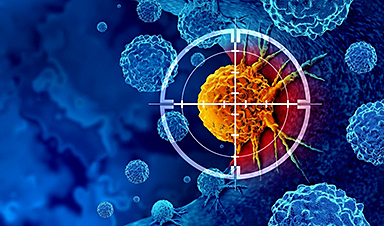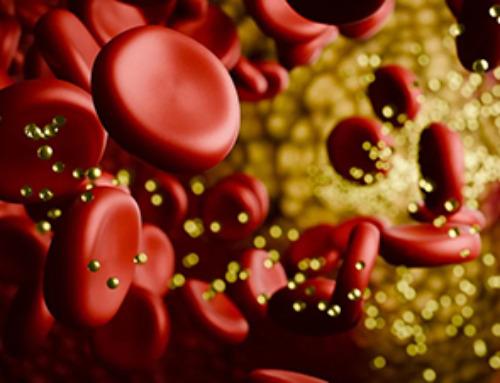New data from Denmark shows the HPV vaccine’s powerful long-term impact, while also revealing why cervical cancer screening is still essential.
A Danish study published in the journal Eurosurveillance reports that women who received the human papillomavirus vaccine in their adolescence are significantly less likely to develop human papillomavirus infections later in life.
Background
Prolonged infection with human papillomavirus (HPV) is associated with an increased risk of developing cervical cancer. Early screening and vaccination against HPV are effective strategies to prevent this cancer type.
Screening for precancerous lesions has been a widely considered strategy for secondary prevention of cervical cancer in Europe. Vaccines covering both high-risk and low-risk HPV types have been introduced as a primary preventive intervention at the end of the 2000s.
In Denmark, free public HPV vaccination (4-valent vaccine) was initially offered to all girls aged 13 to 15 in October 2008. It was later introduced to all girls turning 12 in January 2009. In November 2017, a 9-valent vaccine, which covers high-risk HPV types responsible for up to 90% of cervical cancers, was introduced in the country.
Cervical cancer screening is offered to women living in Denmark from the age of 23 years until the age of 64 years. One of the first groups of women who received the 4-valent HPV vaccination as teenage girls in 2008 reached the screening age of 23 years in 2017.
To carefully monitor screening outcomes in these vaccinated women, Trial23, a public health study embedded in the Danish national cervical screening program, was designed to determine the prevalence of HPV infection in cervical cell samples collected during three consecutive rounds of screening invitations.
In the current study, researchers assessed the prevalence of HPV infection in these consecutive cervical samples and the changes in HPV persistence and incidence between the first, second, and third samples.
Key findings
A total of 17,252 women with at least one cervical cell sample were registered in the Trial23 between February 2017 and February 2024. In this study, researchers analyzed 16,955 cervical samples collected from 8,659 women.
The prevalence of any high-risk HPV infection in the first, second, and third rounds of cervical samples was 32%, 28%, and 31%, respectively. The prevalence of HPV types 16 and 18 (high-risk viruses covered by the 4-valent HPV vaccine) remained low over time in all analyzed samples.
The comparison between vaccinated and unvaccinated women revealed significantly lower prevalence of HPV types 16 and 18 in vaccinated women. The prevalence of this virus type was 15 to 17% before vaccination, which reduced to less than 1% in vaccinated women by 2021.
Notably, the study found that about one-third of women still have infections with high-risk HPV that are not covered by the vaccine, and that the incidence of these infections was significantly higher in vaccinated women compared to unvaccinated women. However, the prevalence differences were not statistically significant.
Regarding HPV infection persistence and incidence, the study found a high persistence for both vaccine-covered and non-covered virus types, irrespective of vaccination status. The incidence of HPV types 16 and 18 was significantly lower in vaccinated women compared to that in unvaccinated women. However, the incidence, but not prevalence, of non-covered high-risk HPV types was significantly higher in vaccinated women compared to that in unvaccinated women, a pattern the authors suggest may be due to type replacement or unmasking.
Study significance
The study reports the prevalence of HPV infection in three sets of cervical cell samples collected consecutively from young Danish women who received the 4-valent HPV vaccination in their adolescence.
According to the findings, the prevalence of infection with HPV types 16 and 18 in vaccinated women is currently less than 1%, a significant drop from the pre-vaccination prevalence. In unvaccinated women, the prevalence is 5%, which is also much lower than the pre-vaccination prevalence. The drop in prevalence in unvaccinated women indicates population immunity.
Regarding infections with high-risk HPV types that are not covered by the vaccine, the study reports a prevalence of 30% in vaccinated women and 27% in unvaccinated women, which is a non-significant difference. A persistently high prevalence of non-vaccine high-risk HPV types in both vaccinated and unvaccinated women highlights the need for continuous screening of these generations until women vaccinated as girls with the 9-valent vaccine covering all major HPV types reach the screening age. At this point, the screening model might be reconsidered, with the study suggesting that less intensive but continued screening could be appropriate.
The study finds no significant differences in the persistence of HPV 16 and 18 infections between vaccinated and unvaccinated women, which indicates that the 4-valent vaccine, which covers high-risk HPV types 16 and 18 and low-risk types 6 and 11, is a prophylactic (preventive) vaccine and not a therapeutic vaccine. The conclusion supports the finding that persistence rates were similar regardless of vaccination status.
Overall, the study findings highlight the long-term protective efficacy of the HPV vaccine and advise close monitoring of factors associated with vaccine hesitancy and low vaccine coverage, such as perceived side effects of the vaccine.Journal reference:
News
New technique overcomes technological barrier in 3D brain imaging
Scientists at the Swiss Light Source SLS have succeeded in mapping a piece of brain tissue in 3D at unprecedented resolution using X-rays, non-destructively. The breakthrough overcomes a long-standing technological barrier that had limited [...]
Scientists Uncover Hidden Blood Pattern in Long COVID
Researchers found persistent microclot and NET structures in Long COVID blood that may explain long-lasting symptoms. Researchers examining Long COVID have identified a structural connection between circulating microclots and neutrophil extracellular traps (NETs). The [...]
This Cellular Trick Helps Cancer Spread, but Could Also Stop It
Groups of normal cbiells can sense far into their surroundings, helping explain cancer cell migration. Understanding this ability could lead to new ways to limit tumor spread. The tale of the princess and the [...]
New mRNA therapy targets drug-resistant pneumonia
Bacteria that multiply on surfaces are a major headache in health care when they gain a foothold on, for example, implants or in catheters. Researchers at Chalmers University of Technology in Sweden have found [...]
Current Heart Health Guidelines Are Failing To Catch a Deadly Genetic Killer
New research reveals that standard screening misses most people with a common inherited cholesterol disorder. A Mayo Clinic study reports that current genetic screening guidelines overlook most people who have familial hypercholesterolemia, an inherited disorder that [...]
Scientists Identify the Evolutionary “Purpose” of Consciousness
Summary: Researchers at Ruhr University Bochum explore why consciousness evolved and why different species developed it in distinct ways. By comparing humans with birds, they show that complex awareness may arise through different neural architectures yet [...]
Novel mRNA therapy curbs antibiotic-resistant infections in preclinical lung models
Researchers at the Icahn School of Medicine at Mount Sinai and collaborators have reported early success with a novel mRNA-based therapy designed to combat antibiotic-resistant bacteria. The findings, published in Nature Biotechnology, show that in [...]
New skin-permeable polymer delivers insulin without needles
A breakthrough zwitterionic polymer slips through the skin’s toughest barriers, carrying insulin deep into tissue and normalizing blood sugar, offering patients a painless alternative to daily injections. A recent study published in the journal Nature examines [...]
Multifunctional Nanogels: A Breakthrough in Antibacterial Strategies
Antibiotic resistance is a growing concern - from human health to crop survival. A new study successfully uses nanogels to target and almost entirely inhibit the bacteria P. Aeruginosa. Recently published in Angewandte Chemie, the study [...]
Nanoflowers rejuvenate old and damaged human cells by replacing their mitochondria
Biomedical researchers at Texas A&M University may have discovered a way to stop or even reverse the decline of cellular energy production—a finding that could have revolutionary effects across medicine. Dr. Akhilesh K. Gaharwar [...]
The Stunning New Push to Protect the Invisible 99% of Life
Scientists worldwide have joined forces to build the first-ever roadmap for conserving Earth’s vast invisible majority—microbes. Their new IUCN Specialist Group reframes conservation by elevating microbial life to the same urgency as plants and [...]
Scientists Find a Way to Help the Brain Clear Alzheimer’s Plaques Naturally
Scientists have discovered that the brain may have a built-in way to fight Alzheimer’s. By activating a protein called Sox9, researchers were able to switch on star-shaped brain cells known as astrocytes and turn them into [...]
Vision can be rebooted in adults with amblyopia, study suggests
Temporarily anesthetizing the retina briefly reverts the activity of the visual system to that observed in early development and enables growth of responses to the amblyopic eye, new research shows. In the common vision [...]
Ultrasound-activated Nanoparticles Kill Liver Cancer and Activate Immune System
A new ultrasound-guided nanotherapy wipes out liver tumors while training the immune system to keep them from coming back. The study, published in Nano Today, introduces a biodegradable nanoparticle system that combines sonodynamic therapy and cell [...]
Magnetic nanoparticles that successfully navigate complex blood vessels may be ready for clinical trials
Every year, 12 million people worldwide suffer a stroke; many die or are permanently impaired. Currently, drugs are administered to dissolve the thrombus that blocks the blood vessel. These drugs spread throughout the entire [...]
Reviving Exhausted T Cells Sparks Powerful Cancer Tumor Elimination
Scientists have discovered how tumors secretly drain the energy from T cells—the immune system’s main cancer fighters—and how blocking that process can bring them back to life. The team found that cancer cells use [...]





















